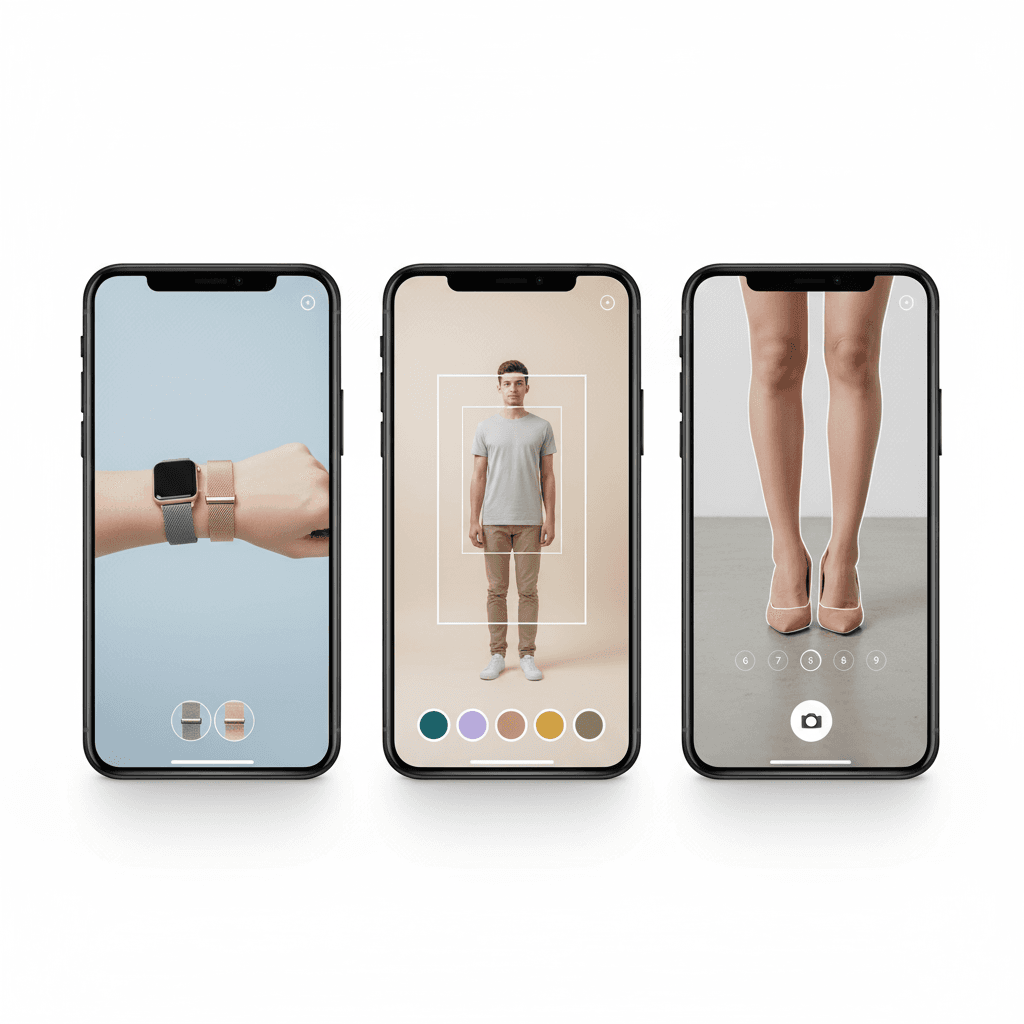How Augmented Reality Retail Shopping Is Changing Fashion?
How Mood-Based AI Styling Elevates Fashion in 2025


Introduction:
Imagine this: you wake up feeling bold, throw on your fav playlist, and hop online to shop—but instead of endless scrolling, your screen lights up with outfits that match your mood. That’s the magic of mood-based AI styling, a new wave of fashion tech that reads how you feel and serves up styles to match.
Thanks to tools like Glance AI, your vibe isn’t just seen, it’s styled. Whether you're in your “main character energy” or cozy-core feels, your wardrobe now syncs with you.
What Is Mood-Based AI Styling?

Mood-based AI styling is the new wave of fashion personalization that curates what you wear based on how you feel. It uses tech like facial recognition, chat analysis, and mood tagging to figure out your vibe, then matches it with outfits you’ll actually want to wear.
It works like this:
- Reads your mood from facial expressions, tone, or your inputs
- Analyzes what you love (like past buys or saved looks)
- Generates full outfits that reflect how you feel right now
This isn’t just personalization. Mood-based AI styling adds emotional intelligence to your fashion experience—aligning your wardrobe with confidence, calm, excitement, or whatever’s going on in your head today.
Why Mood-Based AI Styling Is Changing the Game in 2025
How Mood-Based AI Styling Works
1. Detect Your Mood with AI Tools
Your emotional state is captured through:
- A quick selfie scan (like Glance AI’s facial emotion detection),
- Text input (e.g., saying “feeling bold today”),
- Or manual mood tagging (“confident,” “chill,” “romantic”).
Platforms like Daydream and Zalando’s Mood Filter already let users self-select emotional states to shape their fashion feed.
A Vogue Business report found users interacted 2.4× more with mood-based filters than traditional product pages (source).
2. Mix It With Personal Style + AI Intelligence
Once your mood is known, mood-based AI styling cross-references:
- Past likes, favorites, and purchases,
- Your body profile (size, shape, proportions),
- Current trends and seasonal shifts (e.g., layering suggestions in winter).
For example, if you’re feeling playful and your style history shows a love for dopamine dressing, the AI might suggest a lime-green knit set or ruffled co-ords—styled with on-trend chunky sneakers.
3. Serve Shoppable, Real-Time Looks
Unlike traditional product listings, mood-based AI styling delivers full outfits, not standalone items:
- You see a real-time, virtual model (or even yourself) styled based on your vibe.
- Every look is instantly shoppable, adjustable, and mood-reflective.
Some tools even generate multiple looks per mood, letting users swipe through confident, comfy, or edgy outfit variations.
Benefits of Mood-Based AI Styling
| Feature | Why It Matters |
| Emotionally smart fashion | Curated for how you feel, not just what’s trending |
| Faster shopping | No more endless scrolls—get right to the good stuff |
| Better purchases | You’re more likely to keep what you emotionally connect with |
| Inclusivity | Works across moods, sizes, and styles |
| Dynamic discovery | Every mood brings fresh outfit ideas |
Ethical Challenges — And How to Fix Them
Data Privacy and Consent
Mood-based AI styling relies on sensitive data. Platforms must:
- Provide explicit opt-in procedures.
- Explain data retention and usage policies.
- Comply with frameworks like GDPR and India’s DP Bill.
Bias and Representation
Emotional AI must be trained on diverse datasets to avoid racial or cultural misinterpretation. Audits and ethical guidelines must back every mood-based AI styling model.
Emotional Manipulation Safeguards
Avoid using user vulnerability (e.g., sadness or stress) to push impulse purchases. Ethical mood-based AI styling systems prioritize empowerment over exploitation.
Transparency and Explainability
Explain why a recommendation was made. This builds trust and aligns mood-based AI styling with responsible AI practices.
Conclusion: The Future of Emotion-Driven Fashion
Mood-based AI styling is not a passing trend; it is the future of emotionally intelligent commerce. By blending emotional analysis with tech-driven personalization, brands can deliver shopping experiences that feel intuitive, empathetic, and empowering.
In 2025, success in fashion will be defined not just by aesthetics, but by emotional alignment. As platforms like Glance AI lead this movement, mood-based AI styling will continue to reshape digital retail into a space that not only sees the consumer but understands them.
FAQs
- What is mood-based AI styling?
Mood-based AI styling is a technology that uses artificial intelligence to recommend outfits based on your current emotional state, lifestyle, and environment. It analyzes inputs like facial expressions, social media activity, weather, location, and even user preferences to suggest clothing that complements or uplifts your mood. This makes fashion discovery more intuitive, personalized, and confidence-boosting, helping shoppers feel stylish while aligning with how they feel each day.
2. How does Glance support mood-based styling?
Glance AI uses generative models and personalized AI technology to create styled, shoppable visuals that reflect a shopper’s mood and preferences.
3. Is mood-based fashion shopping effective?
Yes, mood-based fashion shopping can be effective when it is guided by personalization rather than impulse. AI driven mood-based styling works by translating emotional intent such as feeling confident, calm, or expressive into outfit recommendations that align with a shopper’s real preferences, body comfort, and lifestyle. This reduces decision fatigue and improves satisfaction because the suggestions feel emotionally relevant and wearable. However, its effectiveness depends on mindful use. When mood signals are combined with past behaviour and fit data, the result is intentional shopping rather than short term emotional spending.
4. Can AI accurately detect mood?
AI can detect mood with fairly high accuracy, but within defined limits. Using signals such as facial expressions, interaction patterns, browsing behaviour, and voluntary mood inputs, AI systems can infer emotional states rather than fully understand them. Research shows that emotions like happiness and surprise are detected most accurately at around 96 percent, while emotions such as anger, disgust, fear, and sadness fall slightly lower, generally between 91 and 94 percent accuracy. In real world applications, the most reliable results come from combining mood detection with historical preferences and contextual behaviour, making AI better at responding appropriately rather than making absolute emotional judgments.
5. Is Glance an AI stylist?
No, Glance is not an AI stylist in the traditional sense. It’s an AI-powered discovery platform that curates and showcases personalized fashion content to help users explore styles that align with their preferences and behavior.






